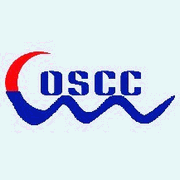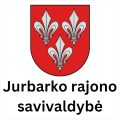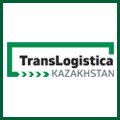
Liege Airport is on a serious upward trajectory, having handled more than a million tonnes of freight every year for the past five years, and growing. 2024 saw 1.17 million tonnes pass through the airport, and 2025 is set to exceed that by another 12%. And that is not all – the airport has ambitious plans regarding digitalisation, sustainability, and above all, creating a multimodal cargo paradise in the heart of Europe.
Most airports in Europe and around the world are designed, first and foremost, around passenger comfort and convenience. Liege Airport consciously opted to focus on cargo first, back in the mid-1990s already, and to positively exploit its long list of cargo USPs starting with its golden ticket of unrestricted 24/7 operations. That fact alone enables full flexibility when planning flights and is a key reason why charter operators favour the unique Belgian cargo airport. While over 60% of its flights are scheduled, almost 40% are charter operations – the highest cargo charter ratio of any airport in Europe. Add to this LGG’s quick turnaround times, swift and efficient customs clearance, and its perfect geographic location at the very heart of the European continent, and it is clear to see why the airport caters to more than 50 cargo airlines – many of them long-term business partners.
“When you’ve been in the cargo business as long as we have as an airport, there is nothing that is impossible to move,” states Frederic Brun, Head of Commercial Cargo & Logistics at Liege Airport. “Our cargo first focus enables us to spot trends, adapt and optimize our processes, and tailor our infrastructure accordingly. We have created optimum conditions for the transport of perishables and live animals, for example. Around 730 tonnes of flowers pass through our warehouses every day, while our Horse Inn caters to 12,000 horses every year. And we were early adopters when it comes to e-commerce, too. These days, LGG already handles over 1000 million parcels every year, and we’re continuously improving our processes to remain at least three steps ahead of developments in this fast-moving commodity segment.”
The pandemic was a great learning curve for staying ahead. The airport handled the highest tonnage in its entire history - 1.41 million tonnes in 2021 – and managed this with fewer resources than normal. Since then, LGG has accelerated its digital transformation and introduced improved structures and processes to enable faster ULD handling. It has a clear vision of where it intends to be come 2030: shifting from its current position as Europe’s 5th largest cargo airport, to a place in the Top 3.
“There is only one other airport that will be able to match or even surpass LGG in its absolute top quality cargo focus in the next 5 years, and that will be our Digital Twin!” says Torsten Wefers, Vice President Sales & Marketing at Liege Airport. “We have already completed a number of milestones on our digitalisation journey to full data and shipment transparency. This is now our first year of LGG CONNECT – our digital cargo community – and LGG TRACKING which offers real-time cargo movements, is in full swing. And there are exciting developments on the horizon as we begin to harness AI and Big Data to maximise our operational efficiency. Once our Digital Twin is fully live, we’ll be able to anticipate any operational issues and proactively work to minimise any disruptions or safety risks, for example. And it will support us in meeting our environmental goals, too.”
Sustainable operations have been on the airport’s agenda since years. In line with its goal to reach zero carbon emissions by 2030, LGG already generates 100% of the electricity required to power its building from its own production. It operates a fuel farm on its premises which also caters for SAF, and, like the ground handlers operating at the airport, is actively switching its diesel-powered airside fleets to EV.
“We have allocated more than €60 million to green initiatives in the short term, with almost six times that amount invested in long-terms eco plans on all levels, from noise pollution reduction to protecting biodiversity in and around the airport, for example,” Frederic Brun comments. “And part of this solution involves making the most of our excellent multimodal infrastructure. There’ll be much more to say about that in the coming weeks. For now, we’re working towards a higher level in our environmental certification to enhance our ACI World standards, and are hoping to perhaps take home the Airport of the Year Air Cargo Week award in Munich, next week. Fingers crossed.”
Source, Lemon Queen




.jpg)






